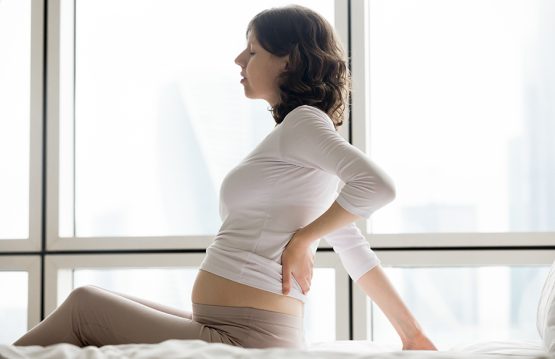Those who have an office work can fall victim to chronic diseases. Among the most common are spine problems and back pain, weight gain and obesity, vision problems and the much discussed overwork or so-called burnout syndrome.
Most of us want to work in a clean environment, in beautiful multi-store buildings, in an open office with state-of-the-art technology, but in most cases these jobs involve sitting in the chair for hours, sometimes overtime, in front of a computer, often without natural light, in a closed environment, ventilated with air conditioning, in the presence of several dozen colleagues.
CONTENT:
What happens to our spine?
The spine has four physiological curves:
- two curves with anterior convexity, also called lordosis, cervical and lumbar;
- two with posterior convexity, thoracic and pelvic kyphosis.
Sometimes you can see the exaggeration of physiological curves, other times their erasure or even reversal of curves. These deviations can be reducible, functional, falling into the category of vicious attitudes or structural deformities that are caused by diseases that change the shape of vertebral bodies.
Muscle stimulation therapies
Electrotherapy
Electrotherapy is one of the most effective methods of neuromuscular stimulation: it increases cellular metabolism, stimulates the elimination of catabolism products from muscles, considerably increases the amount of intramuscular blood, causes vasodilation and, moreover, stimulates the secretion of endorphins (a hormone that creates a state of well, also known as the hormone of happiness).
At the joint level, physiotherapy stimulates the secretion of synovial fluid, which leads to better joint lubrication and better hydration of intra-articular soft tissues.
Massage
The massage also increases the amount of blood in the muscles and promotes the elimination of toxins. Massage is also particularly important for increasing the elasticity of muscle fibers and for eliminating “foci of contraction” (areas of the muscle that are highly contracted, by breaking the transverse bridges between actin and myosin myofilaments (part of the mechanism of muscle contraction).
Physical therapy
Physical therapy, however, has the most important role in this process because it is the only way to recover or maintain joint mobility, muscle strength, joint stability and coordination. With the help of a physiotherapy program, the functions lost or hindered by prolonged office or sedentary lifestyle can be recovered.
What prevention can we do?
- Attention to the position: the back must be glued to the back of the chair, if it does not have an ergonomic shape you can use a pillow to support the lumbar area, sitting at about 5-8 cm from the pillow, the elbows should make an angle of 90 degrees with the body and the forearms to form a straight line, the knees should be at a slightly lower level than the thighs, the correct position of the neck involves an alignment of the ears with the shoulders, the distance from the monitor should be about 40 -50 cm, the mouse and keyboard will be placed so that the elbows are parallel and form a 90-degree angle with the body, and the forearms are extended.
- Taking work breaks and getting up from the chair at intervals of 40-50 minutes.
- Early consultation with a specialist.











